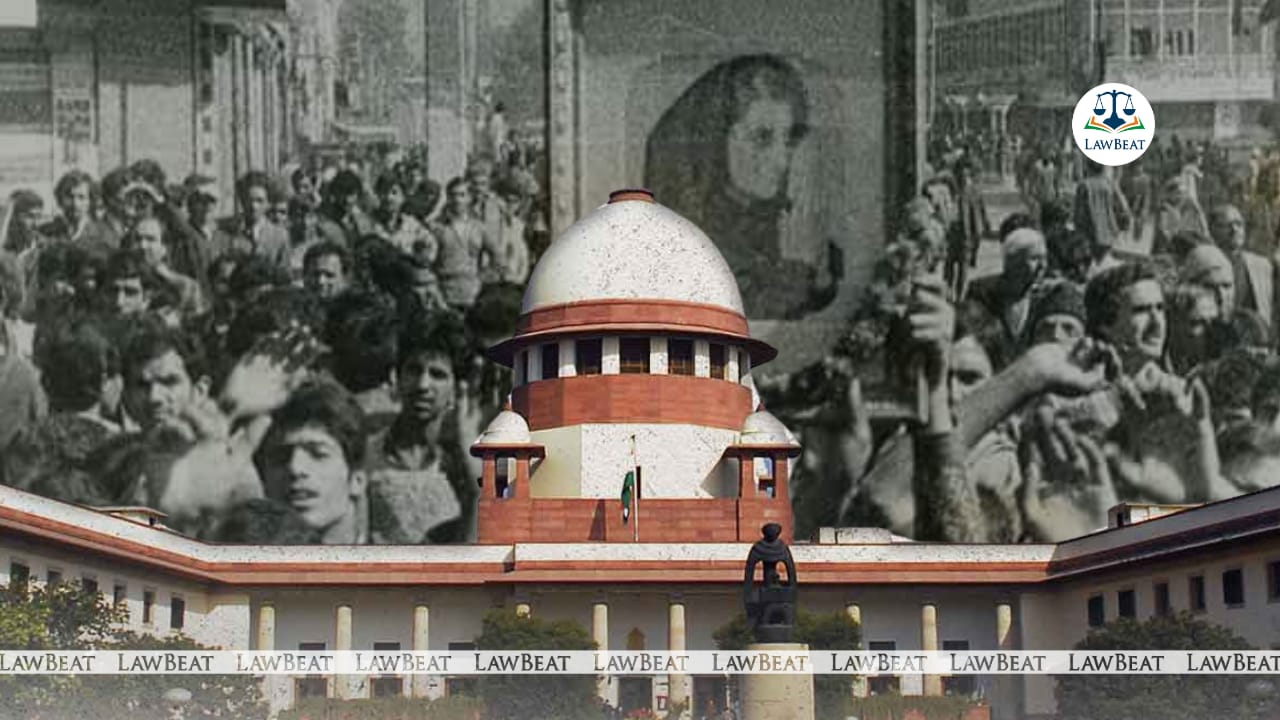1984 Anti-Sikh Riots| SC Orders Punjab to 'assess feasibility' of providing housing to 39 victim families

According to the authorities, none of the petitioners are genuine riot-affected victims, and they have been in unlawful occupation of the premises for almost 40 years
While taking note of a very peculiar problem of the petitioners, the Supreme Court of India recently asked the State of Punjab to assess the feasibility of providing alternative housing for the 39 families in Mohali, who claim to be the victims of the 1984 Anti-Sikh Riots.
"We would also like to know from the authorities whether it is feasible to regularize the occupation of the petitioners in the premises, subject to certain terms and conditions, like outright sale after determining a reasonable price or something like that," Justice Pardiwala led bench said.
Top Court's bench, also comprising Justice R. Mahadevan, accordingly granted the state four weeks to explore solutions for accommodating the 39 families, and said, "We have a very peculiar problem to be tackled with. On one hand, the petitioners have no legal right to continue occupying the premises, but on the other hand, they have been in possession for almost 40 years."
Court made these observations in an SLP moved by the petitioners, claiming that 39 families had been evicted by the authorities on the grounds that they were not genuine riot victims. The petitioners contended that they had no option but to flee to a far-off place from the riot-stricken areas.
According to the authorities, the petitioners are not genuine riot-affected victims but have trespassed into the premises and have been in unlawful occupation for the past couple of years.
The Punjab and Haryana High Court in 2011 had directed the Greater Mohali Area Development Authority not to dispossess the petitioners from the flat in dispute until the claim regarding the issuance of the Red Card was decided by the Deputy Commissioner, SAS Nagar, Mohali.
Subsequent to this, the authorities undertook the exercise of ascertaining whether the petitioners were genuine victims of the riots. It was contended by the authorities that none of the petitioners were genuine riot-affected victims, adding that they were in unlawful occupation of the premises.
In September 2017, the High Court passed an order directing the petitioners to file a comprehensive reply to the public notice that sought the vacating of houses within 48 hours. Ultimately, eviction notices were issued against the petitioners. Aggrieved by the notices, the petitioners approached the Supreme Court. While noting that they had been in occupation of the premises since 1985, the court pointed out that they were put into possession at the relevant point in time by the local MLAs.
"The exercise to ascertain the genuineness of their being riot victims has already been undertaken, and it has been found that they are not genuine riot-affected families," the court added.
Further, the authorities also raised the issue of genuine families of the economically weaker section who are in need of shelter. After this, the court directed the respondents to assess whether there are any other premises within Mohali and the adjoining areas where genuine families belonging to the EWS category can be accommodated.
Accordingly, the court posted the matter for hearing after four weeks.
Case Title: HARBHAJAN SINGH (DEAD) & ORS VERSUS THE STATE OF PUNJAB & ORS
